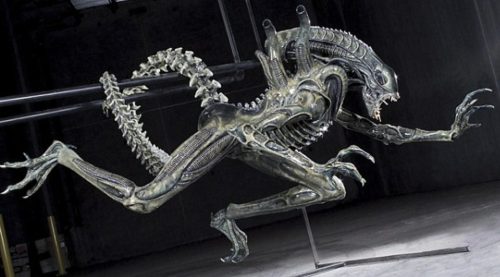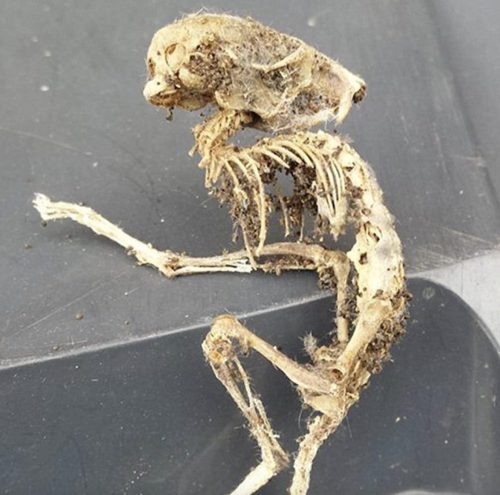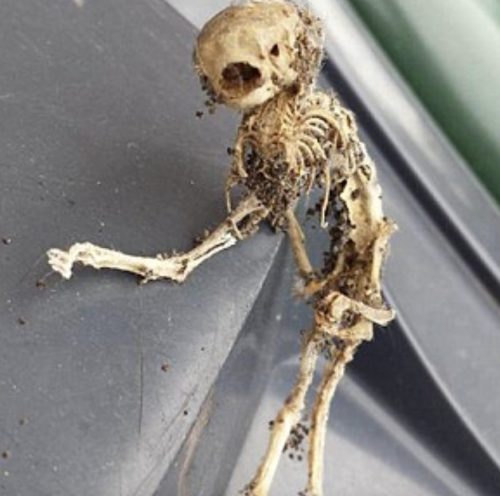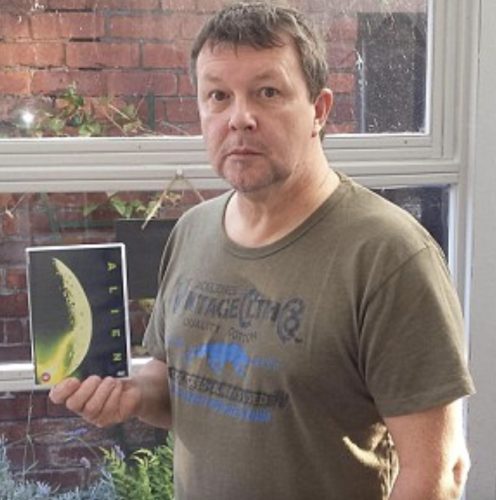In a discovery that seems more akin to a scene from a sci-fi thriller than an everyday occurrence in Lancashire, a family stumbled upon a perplexing creature’s remains under their kitchen cabinet. The strange skeleton, with its upside-down skull, missing front limbs, and mysterious cocoon-like nest, bears an eerie resemblance to the iconic alien creature from Ridley Scott’s renowned horror film, “Alien.”

The extraordinary find was made by Kevin Rea, a former record label boss, at his family home in Altcar, Lancashire. The Rea family uncovered the remains while addressing a leak in their kitchen, which required them to remove the footboards between the cupboard and the floor.
Mr. Rea, who has resided at the historic stone cottage on the Leverhulme Estate with his wife, George, and their son, Eden, for five years, described how he discovered the peculiar skeleton ensconced in a nest-like structure beneath the cupboard. He recounts that when he first laid eyes on the find, it immediately brought to mind the iconic alien that burst from John Hurt’s chest in the classic film.

Measuring at approximately six inches in length, the baffling skeleton left Mr. Rea perplexed. His immediate reaction was to photograph the find before discarding it due to its rather “disgusting” appearance.
Ridley Scott’s 1979 cinematic masterpiece, “Alien,” showcased a malevolent extraterrestrial that wreaked havoc on the crew of the spaceship Nostromo after using a hapless crew member as a host. This iconic film, starring Sigourney Weaver as the courageous Ripley, captivated audiences worldwide and gave rise to a franchise, including three sequels and an “Alien Vs. Predator” spin-off.
The creature in “Alien” was designed by the Swiss surrealist painter and sculptor H.R. Giger, who received an Oscar for his visionary work on the film.

Expert opinions on the identity of the mysterious skeleton remain divided. Stuart Hine, who oversees the Natural History Museum’s Identification and Advisory Service, suggests that the creature could be either a rat or a mouse, with its alien appearance attributed to the skull’s peculiar backward orientation.
The absence of front legs and shoulder blades further contributes to its eerie appearance. He speculates that the cocoon-like nest might have contained remnants of skin, fur, and webbing from moth feeding, and the creature appears to be only a year or two old based on the state of its tail.
Amy Fensome, from the Biosciences College of Life and Environmental Sciences at the University of Exeter, agrees with the rat identification. She points out that the head has seemingly twisted around, causing the skull to face backward, creating the unsettling appearance.

Readers, however, had various interpretations, with suggestions ranging from squirrels and rats to a marmoset. The mystery of this peculiar Lancashire discovery continues to baffle and intrigue both experts and the public alike.






